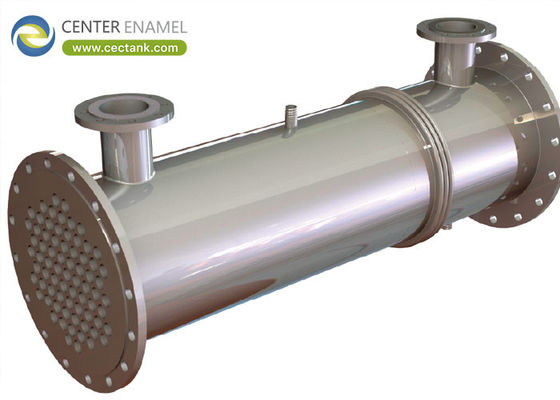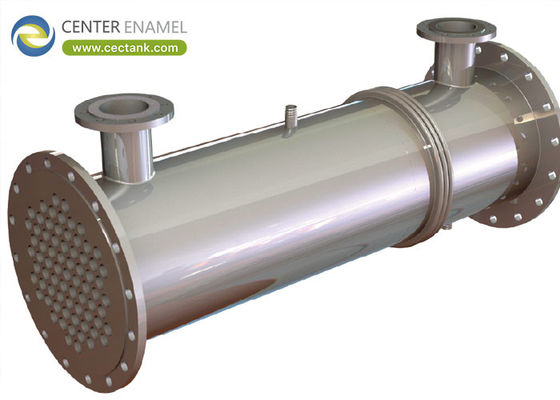-
Glass Fused To Steel Tanks (339)
-
Stainless Steel Tanks (365)
-
Fusion Bonded Epoxy Tanks (229)
-
Galvanized Steel Tanks (234)
-
Aluminum Dome Roofs (665)
-
Wastewater Storage Tanks (226)
-
Welded Steel Tanks (116)
-
Pressure Vessels (273)
-
Anaerobic Digester (201)
-
Industrial Water Tanks (349)
-
Glass Lined Steel Tanks (180)
-
Bolted Steel Tanks (181)
-
Sludge Storage Tank (115)
-
Biogas Storage Tank (173)
-
Leachate Storage Tanks (133)
-
Agricultural Water Storage Tanks (179)
-
Fire Water Tank (166)
-
Grain Storage Silos (130)
-
Biogas Projects (349)
-
Wastewater Treatment Projects (270)
-
Double Membrane Roof (88)
Understanding Separation Pressure Vessels In Fluid And Gas Processing
| Place of Origin: | China |
| Brand Name: | Center Enamel |
| Certification: | ISO 9001,CE, NSF/ANSI 61, WRAS, ISO 28765, LFGB, BSCI, ISO 45001 |
| Minimum Order Quantity: | 1 Sets |
| Price: | 2000 |
| Delivery Time: | 2 months |
| Payment Terms: | L/C, T/T |
| Supply Ability: | 200 sets / days |
|
Detail Information |
|||
Product Description
Understanding Separation Pressure Vessels in Fluid and Gas Processing
In the intricate dance of industrial processes, particularly within the oil and gas, chemical, and environmental sectors, the ability to effectively separate different phases of matter is paramount. Whether it's removing unwanted liquids from gas streams, separating immiscible liquids, or extracting solids from liquid flows, the efficiency and reliability of these separation processes directly impact product quality, operational safety, and environmental compliance. The workhorse behind these critical separations is the separation pressure vessel.
Often operating under pressure, these vessels are more than just containers; they are carefully engineered systems designed to achieve the delicate balance of fluid dynamics and phase behavior necessary for effective separation. They act as the unsung heroes of countless industrial operations, quietly ensuring the purity of gases and the refined quality of liquids. This article delves into the fundamental role, structural features, and material considerations of separation pressure vessels, highlighting their crucial contribution to maintaining fluid system stability and purifying gas streams.
The Core Function: Balancing, Buffering, and Purification
At its heart, a separation pressure vessel serves a multifaceted purpose:
Fluid Pressure Balance Buffering: Fluctuations in pressure within a fluid system can lead to instability and operational disruptions. Separation pressure vessels often act as buffer tanks, absorbing these pressure variations and ensuring a more consistent and stable flow downstream. This is particularly important in processes with intermittent flow rates or pressure surges. The vessel's volume provides a temporary holding capacity, allowing pressure to equalize and preventing damage to sensitive equipment.
Gas Purification and Separation: This is perhaps the most critical function. Separation pressure vessels are designed to remove unwanted components from gas streams. This can include separating liquids (like water or hydrocarbon condensate) from natural gas, removing solid particulates, or even separating different gaseous components based on their physical properties. The purified gas stream is then suitable for further processing, transportation, or utilization.
Multi-Phase Separation: Many industrial processes involve mixtures of gases, liquids, and sometimes solids. Separation pressure vessels are engineered to facilitate the segregation of these different phases based on their density, volatility, or other physical characteristics. This can involve separating oil, gas, and water produced from oil wells, or separating different liquid fractions in chemical processing.
In essence, the separation pressure vessel acts as a critical control point in a fluid system, ensuring the medium is in the desired state for subsequent steps in the overall process. Its ability to balance pressure and purify the medium makes it indispensable across a wide range of industries.
Structural Features: Engineered for Effective Separation
The effectiveness of a separation pressure vessel lies not just in its ability to contain pressure but also in its carefully designed internal and external features that promote phase separation:
1. Rich Internal Components: The Key to Separation Efficiency: To achieve optimal separation, these vessels are typically equipped with a variety of internal components, strategically placed to manipulate fluid flow and enhance phase disengagement:
Baffles and Weirs: These are internal plates or walls that alter the flow path of the fluid, reducing turbulence and promoting settling of heavier phases (liquids or solids) or the coalescence of lighter phases (gas bubbles). Weirs, specifically, are often used to control liquid levels and facilitate the overflow of separated liquids.
Fillers (Packing): In some gas-liquid separation applications, packing materials (such as structured packing or random dumped packing) are used to increase the surface area for contact between the gas and liquid phases. This promotes the absorption of certain components from the gas into a liquid absorbent or enhances the condensation of vapors.
Filters and Screens: For the removal of solid particulates from liquids or gases, filters and screens with varying mesh sizes are incorporated. These act as physical barriers, trapping solid particles as the fluid flows through.
Cyclone Plates (Demisters): These devices utilize centrifugal force to separate liquids from gas streams. The gas stream is forced into a swirling motion, causing the heavier liquid droplets to be thrown outwards and coalesce on the vessel walls, while the purified gas flows upwards. Wire mesh demisters are also common, providing a large surface area for liquid droplets to impinge upon and coalesce.
Impingement Plates: These are strategically placed plates that force the fluid stream to change direction abruptly. This sudden change in momentum causes heavier liquid droplets or solid particles to disengage from the lighter gas phase due to inertia.
The specific combination and arrangement of these internal components are carefully engineered based on the properties of the medium being processed, the desired separation efficiency, and the operating conditions.
2. Versatile Interfaces: Facilitating Control and Safety: Separation pressure vessels are designed with multiple interfaces to allow for the controlled introduction and removal of different phases, as well as the integration of essential safety and monitoring equipment:
Medium Inlets: One or more inlets allow the unseparated fluid mixture to enter the vessel. The design and placement of the inlet(s) can influence the initial distribution and momentum of the incoming fluid, impacting separation efficiency.
Outlets for Different Separation Phases: Separate outlets are provided for the removal of the separated phases. For a gas-liquid separator, there will be a gas outlet at the top and a liquid outlet at the bottom (due to gravity). For liquid-liquid separators, outlets at different levels may be used based on the densities of the liquids.
Level Gauges: These instruments provide a visual or electronic indication of the liquid level within the vessel, crucial for monitoring the separation process and preventing overfilling or running dry.
Pressure Gauges: These instruments monitor the internal pressure of the vessel, ensuring it remains within safe operating limits.
Safety Valves (Pressure Relief Valves): These are critical safety devices designed to automatically release excess pressure in the event of an over-pressure situation, preventing catastrophic failure of the vessel.
Sampling Ports: These allow for the periodic or continuous extraction of fluid samples from different points within the vessel to monitor the separation efficiency and the quality of the separated phases.
Drain Connections: These allow for the removal of accumulated sediments or other unwanted materials from the bottom of the vessel.
Manways and Access Hatches: These provide access to the interior of the vessel for inspection, cleaning, and maintenance of the internal components.
The strategic placement and design of these interfaces are essential for the safe and efficient operation of the separation pressure vessel.
3. Diverse Materials: Tailoring to Process Demands: The selection of appropriate materials for the construction of a separation pressure vessel is paramount to ensure its structural integrity, corrosion resistance, and long-term reliability under the specific operating conditions and with the particular medium being processed:
Carbon Steel: A common and cost-effective material for many non-corrosive applications with moderate temperature and pressure requirements. Different grades of carbon steel offer varying levels of strength.
Stainless Steel: Used extensively for corrosive media or when high purity is required. Various grades of stainless steel (e.g., 304, 316) offer different levels of corrosion resistance to a wide range of chemicals.
Alloy Steel: Employed for high-temperature and high-pressure environments where increased strength and creep resistance are necessary. Different alloys (e.g., chrome-moly steels) are chosen based on the specific temperature and pressure demands.
Fiberglass Reinforced Plastics (FRP): Used for certain corrosive applications, particularly at lower pressures and temperatures. FRP offers excellent resistance to a wide range of chemicals and is lightweight.
Special Alloys: For extremely corrosive or demanding environments, specialized alloys like Hastelloy, Inconel, or Monel may be used, offering superior resistance to specific chemicals and high temperatures.
The material selection process involves a careful evaluation of the fluid properties (corrosivity, temperature, pressure), regulatory requirements, and economic considerations. Ensuring material compatibility is crucial for preventing corrosion, erosion, and other forms of material degradation that could lead to leaks or structural failure. Manufacturers like Center Enamel possess the expertise to select the optimal material for each separation pressure vessel based on the specific application requirements, ensuring both safety and longevity.
The Indispensable Role of Separation Pressure Vessels
Separation pressure vessels are more than just holding tanks; they are sophisticated pieces of equipment engineered to perform critical functions in fluid and gas processing. Their ability to balance pressure fluctuations and effectively separate different phases of matter is essential for maintaining the stability of fluid systems and ensuring the purity of gas streams. The rich array of internal components and versatile interfaces, coupled with the careful selection of materials tailored to specific process demands, underscores the engineering rigor that goes into their design and fabrication.
As industries continue to demand higher levels of efficiency, safety, and environmental responsibility, the role of high-standard separation pressure vessels will only become more critical. These unsung heroes of industrial processes will continue to quietly work behind the scenes, ensuring the smooth and safe operation of countless facilities worldwide, and highlighting the importance of robust design and material selection in achieving effective and reliable separation.




